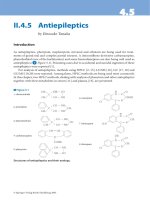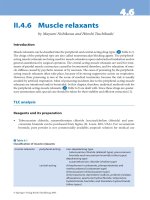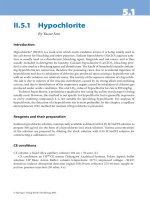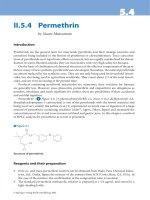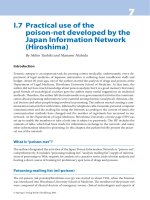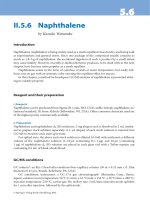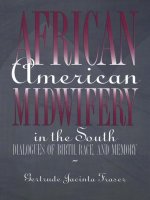Energy Storage in the Emerging Era of Smart Grids Part 9 pptx
Bạn đang xem bản rút gọn của tài liệu. Xem và tải ngay bản đầy đủ của tài liệu tại đây (9.74 MB, 30 trang )
4. Bio-inspired materials for other energy conversion devices
D. desulfuricans
D. desulfuricans E. coli E. coli
C. metallidurans
5. Summary and perspective
6. Acknowledgment
7. References
New Journal of Chemistry
Nature Materials
Chemical Review
π Pure and Applied
Chemistry
Electroanalysis
In Situ
Nanotechnology
Morph
Advanced Functional Materials
Reports on Progress in Physics
Nature
Angewante Chemi International Edition
Science
Chemistry of Materials
Peptide Science
Advanced Materials
Current Nanoscience
Biophysical Journal
Artificial Organs
Trends
in Genetics
Advanced Materials
Nanotechnolgy
Microporous and Mesoporous Materials
Advanced Materials
Journal of Nanoscience and Nanotechnology
Advanced Materials
Nano Letters
Proceedings of the
National Academy of Sciences
Science
Journal of Power Sources
Electrochimica Acta
Nano Letters
Science
Proceedings of the National Academy of Sciences
Nano Letters
General, Organic, and Biological Chemistry
ACS Nano
ACS Nano
Journal of The Electrochemical Society
Nano Letters
Chemical Reviews
Journal of Power Sources
Journal of The American Chemical
Society
Japanese Journal of Appliced
Physics
Inorganic
Chemistry
Chemistry of Materials
Journal of Power Sources
Biotechnology Letters
Advanced Functional Materials
11
Thioether Bond Containing Polymers as
Novel Cathode Active Materials for
Rechargeable Lithium Batteries
Zhang J.Y., Zhan H., Tang J., Zhan L.Z., Song Z.P.,
Zhou Y.H. and Zhan C.M.
College of Chemistry & Molecular Sciences,
Wuhan University,
PR China
1. Introduction
The development of lightweight and high energy-density rechargeable batteries is of
importance with the increasing demand for mobile power and the extensive use of portable
devices. To build high energy batteries, both the anode (negative electrode in batteries) and
cathode (positive electrode in batteries) must have a high specific capacity. Lithium, with a
theoretical specific capacity of 3860 mA h g
-1
at the anode, may offer a high-energy density,
if the cathode material also has a high capacity. Most of the cathode materials currently in
use are inorganic materials, such as transition metal oxide, the specific capacity of which is
very low(less than 200 mAhg
-1
) compared with lithium and limited the specific capacity of
lithium secondary battery.
Sulfur is of high specific capacity, cheap, and environmentally benign as cathode material
for rechargeable lithium batteries. It has attracted great interest and has being extensively
studied. The shortcomings are its electric insulation, dissolution in solvents, and migration
of S
2−
from cathode.
Since Liu and Visco et al. (M. Liu et al., 1989; Visco et al., 1989) found that organic disulfide
compounds could be used as cathode materials for rechargeable lithium battery in late
1980s, many researches have been focused on organic disulfide materials. These disulfide
compounds could be divided into five categories (Scheme 1): (1) Small organic compounds
(Scheme 1a), from which small molecular anions (−SRS−) were formed in the reductive state
(Z. J. Liu et al., 2005; Maddanimath et al., 2003; Tsutsumi et al., 1996, 1997, 2001). Therefore
this kind of organic disulfide compounds has the similar disadvantage to elemental sulfur.
(2) Disulfide ladder polymers (Scheme 1b) have polymeric backbone linking disulfide bonds
and do not dissolve in solvents during discharge process. But it is difficult to recombine
perfectly during charging process, so that the cycling property is poor (Huang et al., 2003;
Naoi et al, 1998; Su et al., 2004). (3) Disulfide polymers have disulfide bonds as side-chains
(Scheme 1c), in which the two S atoms of one disulfide bond (–S–S–) are linked to the same
polymeric main chain. Hence the recombination of disulfide bonds could be improved
(Amaike & Iihama, 2006; Deng et al., 2006; J. X. Li et al., 2004; Uemachi et al., 2001; Xu et al.,
2006; Xue et al., 2003). (4) Polysulfide compounds (Myachina et al., 2006; Trofimov et al.,
Energy Storage in the Emerging Era of Smart Grids
238
2002, 2006) (Scheme 1d) have high specific capacity in the first cycle and serious cycling
fading due to its polysulfide structure. (5) Sulfurized polymers were synthesized through
heating the mixture of organic polymer compounds and sulfur. Their structure is unclear;
the electrochemical behaviors relied on the heating conditions. Some of them have high
specific capacity and good cycling properties (Wang et al., 2002, 2003; Trofimov et al., 2002,
2003). The electrode reactions of all these compounds are based on the same mechanism: the
cleavage-recombination of disulfide (S–S) bonds.
Scheme 1. Organic disulfide compounds for cathode active material in rechargeable lithium
batteries
We found that thioether bond containing polymers (thioether polymers) other than
conventional disulfides could also storage energy as cathode active materials and reported
the research results in series papers since 2007 (Tang et al., 2008; Zhan et al., 2008, 2009;
Zhang et al., 2007, 2008, 2009). The thioether polymers contain thioether (C–S–C) bonds
instead of disulfide (–C–S–S–C–) bonds, in which the thioether bonds are the function
groups to undergo electrode redox reaction. The redox reactions of thioether compounds
(Scheme 3) do not involve bond cleavage, thus it may offer better stability as cathode active
material. Furthermore, thioether bond may afford multi electron redox cathode reaction and
higher specific capacity. As a novel structure, it showed some advantage and need further
study and exploration. In this chapter, some thioether polymers as cathode active materials
in lithium rechargeable battery are reviewed.
2. Structure, syntheses, and characterization of the thioether polymers
2.1 Structure and syntheses routes of the thioether polymers
The structure and synthesis routes of thioether polymers investigated as cathode active
material in our project are summarized in Scheme 2.
Thioether Bond Containing Polymers as Novel Cathode Active Materials for
Rechargeable Lithium Batteries
239
Scheme 2. Structure and Synthesis Routes of thioether polymers
Energy Storage in the Emerging Era of Smart Grids
240
Here Poly[methanetetryl-tetra(thiomethylene)] PMTTM, Poly(2,4-dithiopentanylene) PDTP,
and Poly(ethene-1,1,2,2-tetrathiol) PETT are mainchain thioether polymers, in which sulfur
atoms link carbon atoms to form polymeric backbones. The other polymers are side chain
thioether polymers, those polymeric mainchains are consisted of conjugating aromatic
moieties, with thioether side chains as pendants. Among them Poly(2-phenyl-1,3-dithiolane)
PPDT, Poly(1,4-di(1,3-dithiolan-2-yl)benzene) PDDTB, poly(tetrahydrobenzodithiophene)
PTHBDT, and poly[1,2,4,5-tetrakis(propylthio)benzene] PTKPTB have polyphenylene main
chain, linking thiolane on benzene moieties as pendants. Similarly, Poly[3,4-
(ethylenedithio)thiophene] PEDTT has polythiophene backbone, linking cyclo-thiolane on
the 3,4- position on thiophene ring.
The syntheses of thioether polymers are facile and listed in Scheme 2. The mainchain
thioether polymers were prepared by condensation polymerization. The conjugated
polymers were prepared by facile oxidation coupling polymerization.
Most of thioether polymers were insoluble in organic solvents and were characterized by
FT-IR, FT-Raman, XPS (X-ray photoelectron spectroscopy), and elemental analysis.
2.2 Materials characterization
In FT-IR spectra, the absorption peaks of C-S stretching vibration in C-S-C bonds usually
appear around 700 cm
-1
. In FT-Raman spectra, the peaks of C-S stretching vibration are
between 700-600 cm
-1
, and the peaks of C-S-C skeletal deformation are located at 270 to 380
cm
-1
. In XPS spectra, the binding energy peak of S2p in thioether is at 163.6 eV or 164.2 eV.
Most of the thioether polymers show amorphous in XRD curves.
3. Electrochemical properties
3.1 Cyclic voltammetry measurement
The cyclic voltammetry (CV) tests were carried out at a scan rate of 50 μVs
-1
between 1.5 and
4.4 V at room temperature. The cathode was prepared by mixing polymer powder with
carbon black and Teflon in a weight ratio of 4:4:2, the Li foil was used as the reference
electrode and counter electrode with 1M LiN(CF
3
SO
2
)
2
(LiTFSI) in 1,2-dimethoxyethane
(DME)/1,3-dioxolane(DOL) (1:2, by weight) as electrolyte. The cyclic voltammograms (CVs)
results of the first cycle of various thioether polymers are summarized in Table 1.
Thioether Polymer Oxidation
Peaks/V
b
Reduction
Peaks/V
b
poly[methanetetryl-tetra(thiomethylene)] PMTTM 2.20, 3.9 1.89, 2.00
poly(2,4-dithiopentanylene) PDTP 2.16, 3.9 1.72, 1.85
poly(ethene-1,1,2,2-tetrathiol) PETT 2.23, 4.03 2.00, 2.38
poly(2-phenyl-1,3-dithiolane)
a
PPDT
2.71, 3.60 1.55, 1.85
poly(1,4-di(1,3-dithiolan-2-yl)benzene)
a
PDDTB 1.95, 3.60 1.65, 1.75
poly(tetrahydrobenzodithiophene) PTHBDT 3.4-4.2 1.7-2.2, 2.5-2.8
a
Cyclic voltammograms were tests through powder microelectrodes packed with only the pure
thioether polymers in 1M LiN(CF
3
SO
2
)
2
, 1,2-dimethoxyethane/1,3-dioxolane (1:2, by weight) solution at
room temperature; scan rate, 5mVs
−1
.
b
Li foil was used as the reference electrode
Table 1. CV redox peaks of the thioether polymers
Thioether Bond Containing Polymers as Novel Cathode Active Materials for
Rechargeable Lithium Batteries
241
There are two oxidation peaks and two reduction peaks for all of the thioether polymers.
The two oxidation peaks usually appear around 2V and 4V, while the reduction peaks are
between 1.5-2.5V. The high oxidative peak indicates that the polymer may be charged at
higher voltage as cathode material. But the reductive peaks are in lower voltage, which
imply a lower discharge voltage.
3.2 Charge-discharge tests
The charge-discharge tests were performed on Land Battery test system. Working cathodes
was prepared by mixing specific polymer powder with carbon black and Teflon in a weight
ratio of 4:4:2. Lithium foil was used as the anode and the tests was processed at a rate of 50
mA/g in 1M LiN(CF
3
SO
2
)
2
(LiTFSI) in 1,2-dimethoxyethane (DME)/1,3-dioxolane(DOL)
(1:2, by weight) solution. The cut-off voltages were 1.5V and 4.4V.
3.2.1 The cycling specific capacity and proposed redox reaction
The cycling specific capacity of the thioether polymers is summarized. In Fig.1
Poly[methanetetryl-tetra(thiomethylene)] (PMTTM) displays specific capacity of 504 mAhg
-1
at the third cycle, which decreases rapidly and maintains the value around 200 mAhg
-1
at
the 16th cycle. Similarly, Poly(2,4-dithiopentanylene) (PDTP) exhibits a maximal specific
capacity of 174 mAhg
-1
and a stable specific capacity about 100 mAhg
-1
between 16th and
50th cycles. The cycling capacity results of aliphatic thioether polymers suggest that
polymers with thioether groups alone can offer energy storage without disulfide bond or
conjugated polymeric main chain. There are only three kinds of bonds in PMTTM and
PDTP: C-C, C-H, and C-S-C bonds. The saturated C-C and C-H bonds cannot afford redox
reaction, hence it can be deduced that thioether bond is the only electrochemical active
function group to offering energy storage. The oxidation of thioether had been studied and
reported in literatures (Gilbert et al., 1973; Glass et al., 1977, 1990; Momose et al, 1987;
Musker & Roush, 1978; Musker et al., 1978; Musker, 1980; Symons, 1974; Werst, 1991;
Wilson, 1979), which illuminated the formation and existence of thioether cation.
Fig. 1. Cycling capacity of poly[methanetetryl-tetra(thiomethylene)] (PMTTM) and poly(2,4-
dithiopentanylene) (PDTP)
Energy Storage in the Emerging Era of Smart Grids
242
Fig. 2. Cycling capacity of Poly(ethene-1,1,2,2-tetrathiol) PETT In Fig.2 Poly(ethene-1,1,2,2-
tetrathiol) PETT displays a stable discharge specific capacity value of ca. 300 mAhg
-1
from
the 10th cycle to the 40th cycle and shows maximal specific capacity of 632 mAhg
-1
at the
second cycle. The coulomb efficiency is at high level of 90% from the 10th cycle to the 40th
cycle. It shows more stable discharge specific capacity compare to saturate aliphatic
thioether polymers; indicating vinyl structure benefits the electrode reaction.
In Fig. 3 Poly(2-phenyl-1,3-dithiolane) (PPDT)displays a specific capacity of 129 mAhg
-1
at the first cycle and a specific capacity of 238 mAhg
-1
at the second cycle, and then it
decreases and maintains the value around 100 mAhg
-1
. But Poly(1,4-di(1,3-dithiolan-2-
yl)benzene) (PDDTB) exhibits a maximal specific capacity of 378 mAhg
-1
, and a stabilized
specific capacity of about 300 mAhg
-1
. The two polymers have same mainchain and pendant
but different thiolane contents; hence the specific capacity value is determined by its
dithiolane contents.
Fig. 3. Cycling capacity of Poly(2-phenyl-1,3-dithiolane) (PPDT) and Poly(1,4-di(1,3-
dithiolan-2-yl)benzene) (PDDTB)
Thioether Bond Containing Polymers as Novel Cathode Active Materials for
Rechargeable Lithium Batteries
243
The initial discharge specific capacity of Poly[1,2,4,5-tetrakis(propylthio)benzene] PTKPB is
around 200 mAhg
-1
. From the second cycle on, the specific capacity decreases dramatically
and becomes stable after the tenth cycle (Fig. 4).
Fig. 4. Cycle life of Poly[1,2,4,5-tetrakis(propylthio)benzene] PTKPB (a) charge and (b)
discharge
The discharge specific capacity of Poly(tetrahydrobenzodithiophene) PTHBDT was above
550mAhg
−1
. The maximal specific capacity of 820 mAhg
-1
was obtained at the 9th cycle.
After 16 cycles, the specific capacity was above 550 mAhg
-1
(Fig.5). Similarly, the
polythiophene mainchain thioether polymer, Poly[3,4-(ethylenedithio)thiophene] PEDTT
showed discharge specific capacity of 600 mAhg
-1
at 3rd cycle and ca. 400 mAhg
-1
from 19th
cycle to 34th cycle (Fig. 6) [29].
Generally, the specific capacity of polyphenylene and polythiophene mainchain thioether
polymers, PPDT, PDDTB, and poly[1,2,4,5-tetrakis(propylthio)benzene], looked more stable
than that of aliphatic thioether polymers, PDTP and PMTTM. It means that electric
conductive mainchain is benefit to the charge-discharge behavior of the thioether polymers.
Fig. 5. Specific capacity (mAhg
-1
) of poly(tetrahydrobenzodithiophene) vs. cycle numbers.
Energy Storage in the Emerging Era of Smart Grids
244
Fig. 6. Specific capacity of poly[3,4-(ethylenedithio)thiophene]
The measured maximal specific capacity of the thioether polymers are listed in Table 2.
According to proposed redox reaction on S atom of thioether bond (Scheme 3), the theoretic
specific capacity of the thioether polymers was calculated and listed in Table 2. It is very
know that conjugated electro conductive polymers have discharge specific capacity come
from “doping” mechanism as cathode active materials in lithium batteries, but the values
are very lower hence are neglected in this paper. It can be seen that for most of thioether
polymers their maximal specific capacity value is roughly agree with the theoretical specific
capacity. One exception is Poly[3,4-(ethylenedithio)thiophene] PEDTT, its maximal specific
capacity is 650 mAh g
−1
, higher than its theoretic value. But from the 19th cycle to the 34th
cycle, the discharge specific capacity is ca. 400-450 mAh g
−1
(Fig.6), still agrees with the
theoretic value. Generally, the results give support to our proposed mechanism.
SR R
S
+
R R
charge
discharge
Scheme 3. Single electron cathode redox of the thioether polymers
Thioether Polymer theoretic
value
Practical
maximal value
poly[methanetetryl-tetra(thiomethylene)] PMTTM 570 504
poly(2,4-dithiopentanylene) PDTP 505 200
poly(ethene-1,1,2,2-tetrathiol) PETT 595 632
poly(2-phenyl-1,3-dithiolane) PPDT
294 238
poly(1,4-di(1,3-dithiolan-2-yl)benzene) PDDTB 374 378
poly[1,2,4,5-tetrakis(propylthio)benzene] PTKPB 288 200
poly(tetrahydrobenzodithiophene) PTHBDT 279 820
Poly[3,4-(ethylenedithio)thiophene] PEDTT 467 650
Table 2. The theoretic and practical maximal specific capacity of thioether polymers (mAhg
-1
)
Thioether Bond Containing Polymers as Novel Cathode Active Materials for
Rechargeable Lithium Batteries
245
But Poly(tetrahydrobenzodithiophene) PTHBDT has much higher specific capacity than its
theoretic specific values. The theoretic specific capacity of PTHBDT is only 279 mAhg
−1
, but
its practical discharge maximal specific capacity is of 820 mAhg
-1
at the 9th cycle and at most
cycle the discharge specific capacity is above 500 mAhg
−1
(Fig 5). New redox mechanism can
be deduced from the rare high specific capacity: multi electrons are transferred on one sulfur
atom in this thioether polymer [28]. To represent multi-electron redox reaction, a general
reaction formula is proposed in Scheme 4. Here n is the electron number involved in the
electrode redox. Corresponding to the specific capacity of 500 mAhg
-1
and 820 mAhg
-1
, the
electron number is 2 and 3 respectively.
S
+n
R
SR R
- ne
+ ne
R
Scheme 4. Multi-electron Redox reaction of thioether polymer in lithium battery
Poly[3,4-(ethylenedithio)thiophene] PEDTT showed high discharge specific capacity above
650 mAhg
-1
(Fig. 6) at 3rd, the maximal value is also higher than that of theoretic value of
single electron redox, which may due to the multi-electron redox reaction too.
In addition, solvents are important to the cathode redox reaction. The oxidation of thioether
can be facilitated by electro-donating group (Glass, 1977), and thioether cation can be
stabilized by electron donation (Wilson et al., 1979). The specific capacity results of thioether
polymers were tested with 1, 2-dimethoxyethane and 1, 3-dioxolane mixture as electrolyte.
Both two electrolytes are electron donors; the electrolyte may be helpful to the redox of
thioether group.
3.2.2 The charge-discharge curves
The charge-discharge curves of various thioether polymers are summarized and shown in
Fig. 7 to Fig.12.
The charge–discharge curves of poly[methanetetryl-tetra(thiomethylene)] PMTTM are
shown in Fig.7. It can be seen that the capacity plateaus of the two polymers are at ca. 2.2V
on discharge and 2.8 and 3.8V on charge, corresponding to the oxidative potential and
reduction potential in CV (Table 2).
The charge-discharge curves of poly(ethene-1,1,2,2-tetrathiol) PETT are shown in Fig.8. The
charge curve contains two plateaus: the low plateaus are at 2.6–2.8V and the high plateaus
are between 3.3 and 3.8 V. But the discharge voltage is at 2.7–2.0 V. It showed higher
discharge voltage than saturate aliphatic thioether polymer, poly[methanetetryl-
tetra(thiomethylene)]. The results suggest that molecular structure played important role in
the electrochemical behavior of thioether polymer. However, the discharge voltage fading
was dramatic for the two mainchain thioether polymers. Fig. 9 to Fig. 11 show charge -
discharge curves of the three polyphenylene mainchain thioether polymers ―Poly(1,4-di(1,3-
dithiolan-2-yl)benzene) PDDTB, Poly[1,2,4,5-tetrakis(propylthio)benzene] PTKPB, and
poly(tetrahydrobenzodithiophene) PTHBDT. There are well-defined plateau for charge
and discharge curves, the voltages are very close to each other : 2.4 V on charge and 2.3 V on
discharge. These results indicated that high voltage may come from the polyphenylene
backbone, those high oxidation potential afforded high discharge voltage. In addition, their
charge-discharge voltages are very close to each other, which mean higher voltage efficiency
than the mainchain thioether polymers.
Energy Storage in the Emerging Era of Smart Grids
246
Fig. 7. The charge–discharge curves of poly[methanetetryl-tetra(thiomethylene)]
Fig. 8. The charge–discharge of poly(ethene-1,1,2,2-tetrathiol) PETT
Fig. 9. Charge–discharge curves of poly(1,4-di(1,3-dithiolan-2-yl)benzene) PDDTB
Thioether Bond Containing Polymers as Novel Cathode Active Materials for
Rechargeable Lithium Batteries
247
Fig. 10. Charge-discharge curves of poly[1,2,4,5-tetrakis(propylthio)benzene] PTKPB
Fig. 11. The charge–discharge curves of Poly(tetrahydrobenzodithiophene) PTKP
Fig. 12. Charge–discharge curves of Poly[3,4-(ethylenedithio)thiophene] PEDTT
Further, the voltage fading is slighter than those mainchain thioether polymers. The results
mean that electric conductive mainchains improved the charge-discharge behavior of the
thioether polymers.
Energy Storage in the Emerging Era of Smart Grids
248
The charge - discharge curves of Poly[3,4-(ethylenedithio)thiophene] PEDTT (Fig. 12) show
two charge plateaus at ca2.8V and 4.0 V and discharge plateaus at ca. 2.2 V, respectively.
The charge voltage and discharge voltage correspond to the oxidative potentials and
reductive potentials in the CV test, as shown in Table 1. The gap between charge voltage
and discharge voltage indicates the lower voltage efficiency.
4. Conclusion
Thioether polymers were prepared by facile methods and tested as novel cathode active
materials in lithium secondary batteries. The thioether polymers showed high discharge
specific capacity up to 800 mAhg
−1
, discharge voltage above 2V, and good cycling stability.
The results demonstrated that thioether polymers are cathode active material and thioether
bond(C–S–C) is the function group to offer cathode redox reaction. It is proposed that S
cation formed during charge-discharge process and somehow multi-electron redox reaction
took placed, which imparted high specific capacity. Electric conductive mainchain can
improve the charge –discharge performance of the thioether polymers.
5. References
Amaike, M. Iihama, T. (2006). Chemical polymerization of pyrrole with disulfide structure
and the application to lithium secondary batteries. Synth. Met., Vol.156, No. 2-4,
pp.239-243, ISSN: 0379-6779
Deng, S. R. Kong, L. B. Hu, G. Q. Wu, T. Li, D. Zhou, Y. H. Li, Z. Y. (2006). Benzene-based
polyorganodisulfide cathode materials for secondary lithium batteries. Electrochim.
Acta, Vol.51, No.13, pp. 2589-2593, ISSN: 0013-4686
Gilbert, B. C. Hodgeman, D. K. C. Norman, R. O. C. (1973). Electron spin resonance. XXXVIII.
Formation of dimeric radical-cations in the one-electron oxidation of sulfides. J.
Chem. Soc., Perkin Trans. 2(1972-1999), Vol.13, pp.1748-1752, ISSN: 1472-779X
Glass, R. S. Broeker, J. L. Firouzabadi, H. (1990). Stereochemistry of the formation and
hydrolysis of a dithioether dication, J. Org. Chem., Vol.55, No.22, pp. 5739-5746,
ISSN:0022-3263
Glass, R. S. Duchek, J. R. Klug, J. T. Wilson, G. S. (1977). Facilitation of dialkyl sulfide
oxidation by neighboring groups. J. Am. Chem. Soc., Vol.99, No.22, pp.7349-7350,
ISSN: 0002-7863
Huang, L. M. Wen, T. C. Yang, C. H. (2003). Electrochemical copolymerization of aniline and
2,2 '-dithiodianiline. Mater. Chem. Phys., Vol.77, No.2, pp. 434-441, ISSN: 0254-0584
Li, J. X. Zhan, H. Zhou, L. Deng, S. R. Li, Z. Y. Zhou, Y. H. (2004). Aniline-based
polyorganodisulfide redox system of high energy for secondary lithium batteries.
Electrochem. Commun., Vol.6, No. 6, pp.515-519, ISSN:1388-2481
Liu, M. Visco, S.J. De Jonghe, L.C. (1989). Electrochemical properties of organic
disulfide/thiolate redox couples. J. Electrochem. Soc., Vol.136, No. 9, pp. 2570-2575,
ISSN: 0013-4651
Liu, Z. J. Kong, L. B. Wang, L. M. Zhou, Y. H. Zhan, C. M. (2005). Poly (tetrathiooxalic acid)-
Novel cathode active material for secondary lithium batteries. Journal of New
Materials for Electrochemical Systems, Vol. 8, No.4, pp. 269-272, ISSN: 0370-047X
Maddanimath, T. Khollam, Y. B. Aslam, A. Mulla, I.S. Vijayamohanan, K. (2003). Self-
assembled monolayers of diphenyl disulphide: a novel cathode material for
rechargeable lithium batteries. J. Power Sources, Vol.124, No.1, pp. 133-142, ISSN:
0378-7753
Thioether Bond Containing Polymers as Novel Cathode Active Materials for
Rechargeable Lithium Batteries
249
Momose, T. Tanimura, R. Ushida, K. Shida, T. (1987). Comparative analysis of electronic
states of saturated dioxa and dithia heterocycles and their radical cations. J. Phys.
Chem., Vol.91, No.22, pp. 5582-5586, ISSN: 0022-3654
Musker, W. K. (1980). Chemistry of aliphatic thioether cation radicals and dications. Acc.
Chem. Res., Vol.13, No.7, pp.200-206, ISSN: 0001-4842
Musker, W. K. Roush, P. B. (1976). Preparation and reactivity of dithioether dications [R2S+-
+SR2]: a new functional group. J. Am. Chem. Soc., Vol.98, No.21, pp. 6745-6746,
ISSN: 0002-7863
Musker, W. K. Wolford, T. L. Roush, P. B. (1978). An investigation of mesocyclic and acyclic
dithioether cation radicals and dications. J. Am. Chem. Soc., Vol.100, No.20, pp.
6416-6421, ISSN: 0002-7863
Myachina, G. F. Korzhova, S. A. Papernaya, L. K. Deryagina, E. N. Skotheim, T. A.
Trofimov, B. A. (2006). A polysulfide based on bis(thien-2-yl) sulfide: Synthesis and
testing as an active cathode material. Phosphorus, Sulfur Silicon Relat. Elem., Vol.
181, No.6, pp. 1241-1247, ISSN: 1042-6507
Naoi, K. Kawase, K. I. Mori, M. Komiyama, M. (1998). A new polymer cathode -conducting
polymer interconnected with sulfur-sulfur bonds: poly(2, 2'-dithiodianiline). Mater.
Res. Soc. Symp. Proc., 496, pp.309-314.
Su, Y. Z. Niu, Y. P. Xiao, Y. Z. Xiao, M. Liang, Z. X. Gong, K. C. (2004). Novel conducting
polymer poly [bis(phenylamino)disulfide]: Synthesis, characterization, and
properties. J. Polym. Sci., Part A: Polym. Chem., Vol.42, No.10, pp.2329-2339,
ISSN:0887-624X
Symons, M. C. R. (1974). Electron spin resonance detection of alkylthio radicals in irradiated
solids. Radicals of type RSSR-, RSSR2, and R2SSR2+, J. Chem. Soc., Perkin Trans. 2
(1972-1999), Vol.13, pp.1618-1620, ISSN: 1472-779X
Tang, J. Song, Z. P. Shang, N. Zhan, L. Z. Zhang, J. Y. Zhan, H. Zhou, Y. H. Zhan, C. M.
(2008). Poly[3,4-(ethylenedithio)thiophene]: High specific capacity cathode active
material for lithium rechargeable batteries. J. Power Sources. Vol.185, No. 2, pp.
1434-1438, ISSN: 0378-7753
Trofimov, B. A. (2003). Sulfurization of polymers: a novel access to electroactive and
conducting materials. Sulfur Reports, Vol.24, No.3, pp.283-305, ISSN:0196-1772
Trofimov, B. A. Deryagina, E. N. Sukhomazova, E. N. Levanova, E. P. Myachina, G. F.
Korzhova, S. A. Mikhaylik, Y. V. Skotheim, T. A. (2002). Poly(methylene diselenide)
and poly(methylene seleno-polysulfido-selenides), -[-CH2Se2-]n-, -[-CH2SeSmSe-
]n, Sulfur Lett., Vol.25, No.5, pp.229-234, ISSN:0278-6117
Trofimov, B. A. Morozova, L. V. Markova, M. V. Mikhaleva, A. I. Myachina, G. F.
Tatarinova, I. V. Skotheim, T. A. (2006). Vinyl ethers with polysulfide and hydroxyl
functions and polymers there from as binders for lithium-sulfur batteries. J. Appl.
Polym. Sci., Vol.101, No. 6, pp. 4051-4055, ISSN: 0021-8995
Trofimov, B. A. Vasil'tsov, A. M. Petrova, O. V. Mikhaleva, A. I. Myachina, G. F. Korzhova,
S. A. Skotheim, T. A. Mikhailik, Y. V. Vakul'skaya, T. I. (2002). Sulfurization of
polymers 6. Poly(vinylene polysulfide), poly(thienothiophene), and related
structures from polyacetylene and elemental sulfur. Russ. Chem. Bull., Vol.51, No.
9, pp.1709-1714, ISSN:1066-5285
Tsutsumi, H. Okada, K. Fujita, K. Oishi, T. (1997). New type polyamides containing
disulfide bonds for positive active material of lithium secondary batteries. J. Power
Sources, Vol.68, No.2, pp. 735-738, ISSN: 0378-7753
Energy Storage in the Emerging Era of Smart Grids
250
Tsutsumi, H. Okada, K. Oishi, T. (1996). Electrochemical behavior of new polyamides
containing disulfide bonds and pyridine rings in organic electrolyte solution.
Electrochim. Acta, Vol.41, No.16, pp.2657-2659, ISSN:0013-4686
Tsutsumi, H. Oyari, Y. Onimura, K. Oishi, T. (2001). Electrochemical behavior of polyamides
with cyclic disulfide structure and their application to positive active material for
lithium secondary battery. J. Power Sources, Vol.92, No.1-2, pp.228-233, ISSN:0378-
7753
Uemachi, H. Iwasa, Y. Mitani, T. (2001). Poly(1,4-phenylene-1,2,4-dithiazol-3',5'-yl): the new
redox system for lithium secondary batteries. Electrochim. Acta, Vol.46, No.15, pp.
2305-2312, ISSN: 0013-4686
Visco, S. J. Mailhe, C. C. De Jonghe, L. C. Armand, M. B. (1989). A novel class of
organosulfur electrodes for energy storage. J. Electrochem. Soc., Vol.136, No.3, pp.
661-664, ISSN:0013-4651
Wang, J. L. Yang, J. Wan, C. R. Du, K. Xie, J. Y. Xu, N. X. (2003). Sulfur composite cathode
materials for rechargeable lithium batteries, Adv. Funct. Mater., Vol.13, No.6,
pp.487-492,ISSN:1616-301X
Wang, J. L. Yang, J. Xie, J. Y. Xu, N. X. (2002). A novel conductive polymer-sulfur composite
cathode material for rechargeable lithium batteries. Advanced Materials, Vol.14,
No.13-14, pp.963, ISSN: 0935-9648
Werst, D. W. (1991). Radical cation-arene p-molecular complexes: Thioether radical cations in
aromatic solvents. J. Am. Chem. Soc., Vol.113, No.11, pp. 4345-4346, ISSN: 0002-7863
Wilson, G. S. Swanson, D. D. Klug, J. T. Glass, R. S. Ryan, M. D. Musker, W. K. (1979).
Electrochemical oxidation of some mesocyclic dithioethers and related compounds.
J. Am. Chem. Soc., Vol.101, No.4, pp.1040-1042, ISSN: 0002-7863
Xu, G. X. Qi, L. Yu, B. T. Wen, L. (2006). PVC disulfide as cathode materials for secondary
lithium batteries. Chin. J. Polym. Sci., Vol.24, No.3, pp.307-313,ISSN: 0256-7679
Xue, L. J. Li, J. X. Hu, S. Q. Zhang, M. X. Zhou, Y. H. Zhan, C. M. (2003). Anthracene based
organodisulfide positive active materials for lithium secondary battery.
Electrochem. Commun., Vol.5, No.10, pp.903-906, ISSN:1388-2481
Zhan, L. Z. Song, Z. P. Zhang, J. Y. Tang, J. Zhan, H. Zhou, Y. H. Zhan, C. M. (2008).
Synthesis and properties of novel organic thiolane polymer as cathode material for
rechargeable lithium batteries. J Appl. Electrochem., Vol.38, No.12,pp.1691-1694,
ISN: 0021-891X
Zhan, L. Z. Song, Z. P. Zhang, J. Y. Tang, J. Zhan, H. Zhou, Y. H. Zhan, C. M. (2009)
Poly(tetrahydrobenzodithiophene): High discharge specific capacity as cathode
material for lithium batteries. J. Power Sources, Vol.193, No.2, pp. 859-863, ISSN:
0378-7753
Zhang, J. Y. Kong, L. B. Zhan, L. Z. Tang, J. Zhan, H. Zhou, Y. H. Zhan, C. M. (2007).
Sulfides organic polymer: Novel cathode active material for rechargeable lithium
batteries. J. Power Sources, Vol.168, No.1, pp. 278-281, ISSN:0378-7753
Zhang, J. Y. Kong, L. B. Zhan, L. Z. Tang, J. Zhan, H. Zhou, Y. H. Zhan, C. M. (2008).
Aliphatic thioether polymers as novel cathode active materials for rechargeable
lithium battery. Electrochem. Comm., Vol.10, No.10, pp. 1551-1554, ISSN: 1388-2481
Zhang, J. Y. Song, Z. P. Zhan, L. Z. Tang, J. Zhan, H. Zhou, Y. H. Zhan, C. M. (2009).
Poly(ethene-1,1,2,2-tetrathiol): Novel cathode material with high specific capacity
for rechargeable lithium batteries. J. Power Sources, Vol.186, No.2, pp. 496-499,
ISSN: 0378-7753
12
Nanostructured MnO
2
for Electrochemical
Capacitor
Mao-wen Xu
1
and Shu-Juan Bao
2
1
Laboratory of New Energy Material Chemistry,
College of Chemistry & Chemical Engineering, Xinjiang Normal University,
2
Institute of Applied Chemistry, Xinjiang University,
P.R. China
1. Introduction
Energy is always a priority issue for human beings. In the 21st century, pollution due to
combustion of fossil fuel, which has triggered the biggest environmental issue “global
warming”, has become a worldwide problem. The renewable and clean energy sources as
well as efficient use of energy are highly necessary to make our economy, environment,
society, and human species sustainable (Simon & Gogotsi, 2008; Xu et al., 2010). Energy
storage, an intermediate step to energy, creates a new approach to use energy versatility,
cleanly, and efficiently. Electrochemical capacitors (ECs) or supercapacitors (SCs), as a new
energy storage/conversion device, have gained enormous attention owing to their higher
power density and longer cycle life compared to secondary batteries and higher energy
density than conventional electrical double-layer capacitors (EDLC).
It is also characterized
by environmental friendliness, high safety, and good efficiency and can be operated in a
wide temperature range with a nearly infinitely long cycle life. Therefore, supercapacitors
have been applied in and are showing potential application in communications,
transportation, consumer electronics, aviation, and related technologies (Siegwart, 2001;
Burke, 2000; Yoda & Lshihara, 1997; Becker, 1957; Yoshino et al., 2004).
Supercapacitors or ultracapacitors, ECs can be fully charged or discharged in seconds. Their
energy density (about 5 Wh/kg) is lower than in batteries, but a much higher power
delivery or uptake (10 kW/kg) can be achieved for shorter times (a few seconds) (Simon &
Gogotsi, 2008; Siegwart, 2001). They have had an important role in complementing or
replacing batteries in the energy storage field, such as for uninterruptible power supplies
and load-levelling. A recent report by the US Department of Energy assigns equal
importance to supercapacitors and batteries for future energy storage systems and articles
on supercapacitors appearing in business and popular magazines show increasing interest
by the general public in this topic (Simon & Gogotsi, 2008; Whittingham et al., 2004).
Depending on the charge storage mechanism as well as the active materials used, several
types of ECs can be distinguished. One group, Electric double layer capacitor (EDLC) uses
carbon as the electrodes and stores charge in the electric field at the interface. A second
group, known as pseudo-capacitors or redox supercapacitors, uses fast and reversible
surface or near-surface reactions for charge storage, which use transition metal oxides and

